The Supreme Court has declined to challenge the allegedly diversity-neutral admissions policy at a high-performing public high school in Virginia, signaling that the Court is content to leave schools to work out how to attract and admit the student body they want without using traditional race-based indicators.
Lower Court Ruling Leaves Gray Area for Admissions Officers to Navigate

School admissions officers must be creative and innovative in their processes while being sure not to break the law, which is very unclear in its specifications. The current admissions policy at the selective public high school in Northern Virginia does not explicitly consider race but still cultivates a diverse class.
Conservatives Alito and Thomas Want to Draw the Line More Clearly
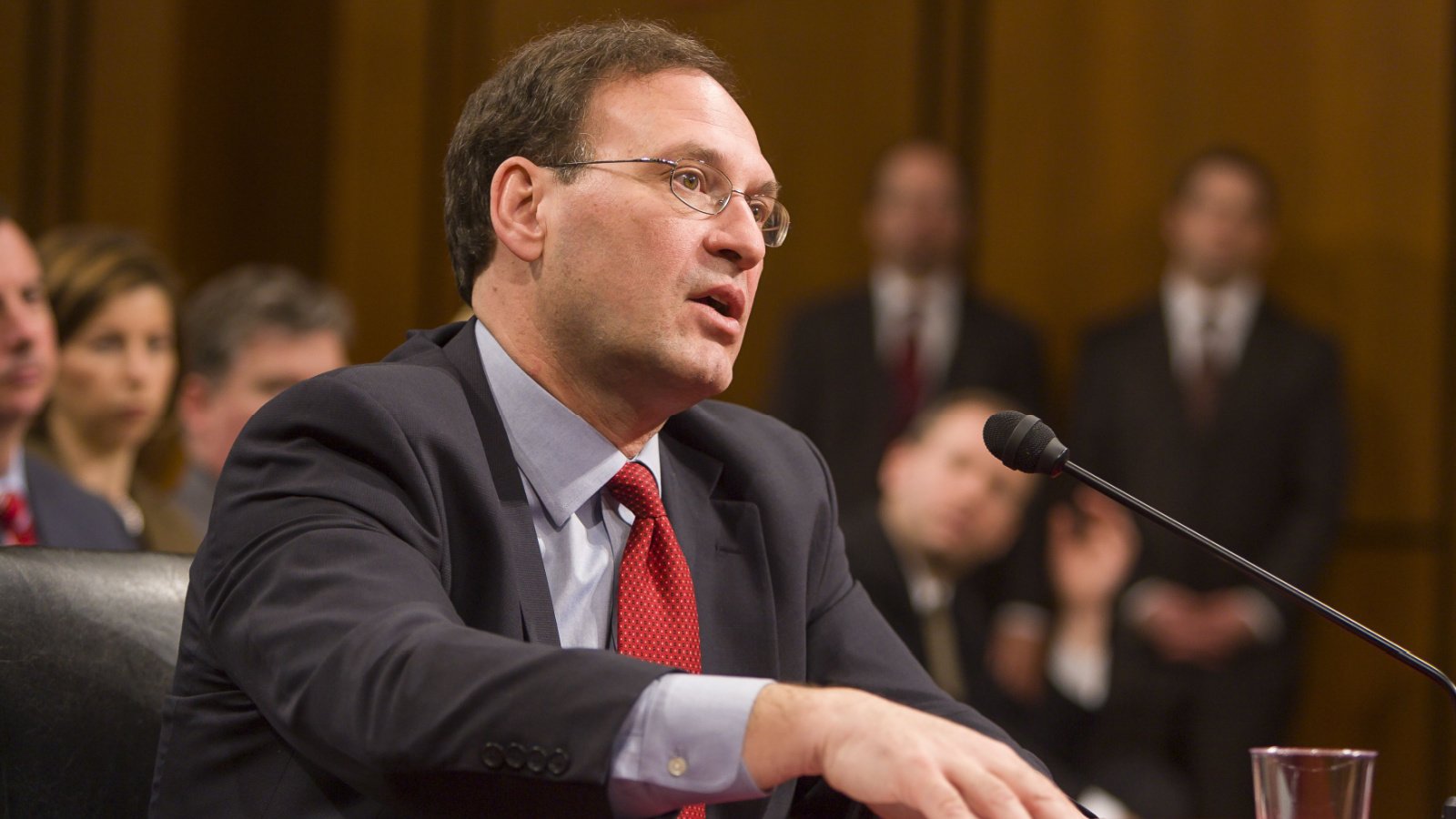
Conservative Justices Alito and Thomas dissented from the Court’s decision not to take up the case, sharing their dismay about passing on the opportunity to further eliminate race-biased admissions programs in the nation’s schools.
Admissions Overhaul at One of Nation’s Top High Schools

The subject of the court case, Thomas Jefferson High School for Science and Technology (TJ) in Alexandria, VA, is one of the nation’s top-performing high schools. In the wake of the 2020 death of George Floyd, TJ decided to review its admissions policy to offer more spots to diverse students who might not have received acceptance otherwise in the high-cost-of-living area of the DC Beltway.
Court Decision Allows Ability to Aim for Race Diversity Without Explicit Indicators
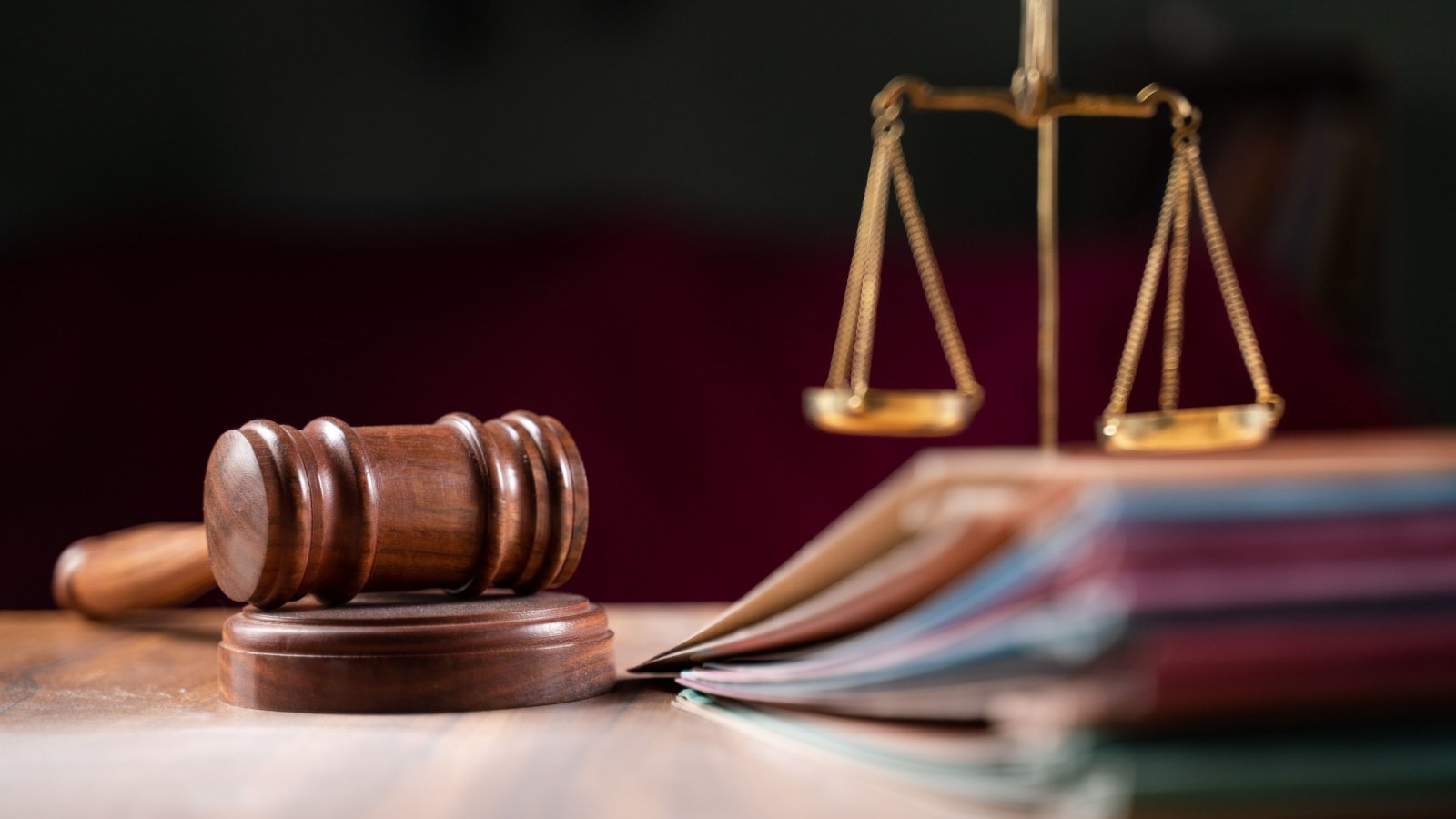
The refusal of the Court leaves in place a lower court ruling that upholds the school’s revamped admissions process, which was altered to promote diversity without explicitly using racial criteria. If the highest court will not intervene, TJ’s example paves the way for schools to circumvent the intent of the 2023 court decision repealing the long-held processes of higher education admissions departments to admit students based on race as a factor.
Admissions Office Boosted Low-Income Applicants

The overhaul of the admissions system entailed increasing equity by focusing on GPA, written assessments, and students’ life experiences instead of just standardized test scores while also providing advantages to applicants from lower socioeconomic backgrounds who may qualify for free or reduced-price lunch for example.
Eliminated Application Fee and Guaranteed Seats to Top Feeder School Students

Moreover, TJ eliminated an application fee and now guarantees a certain number of admission seats for top students from feeder middle schools in the district. The Fairfax County School Board believes its admissions process is in line with the constitutional decision of the Supreme Court in 2023, as they do not explicitly use race as an indicator, and all qualified applicants are considered for admission along similar lines.
Opposed Parent Group Won Initial Lawsuit, But Lost on Appeal

However, a parent group opposing the new admissions process, Coalition for TJ, sued the school over the changes, calling them unconstitutional racial discrimination. In the first ruling, the Coalition for TJ succeeded in their complaint, but that decision was overturned by a three-judge panel on the 4th U.S. Circuit Court of Appeals.
Alito and Thomas Wanted to Hear the Case
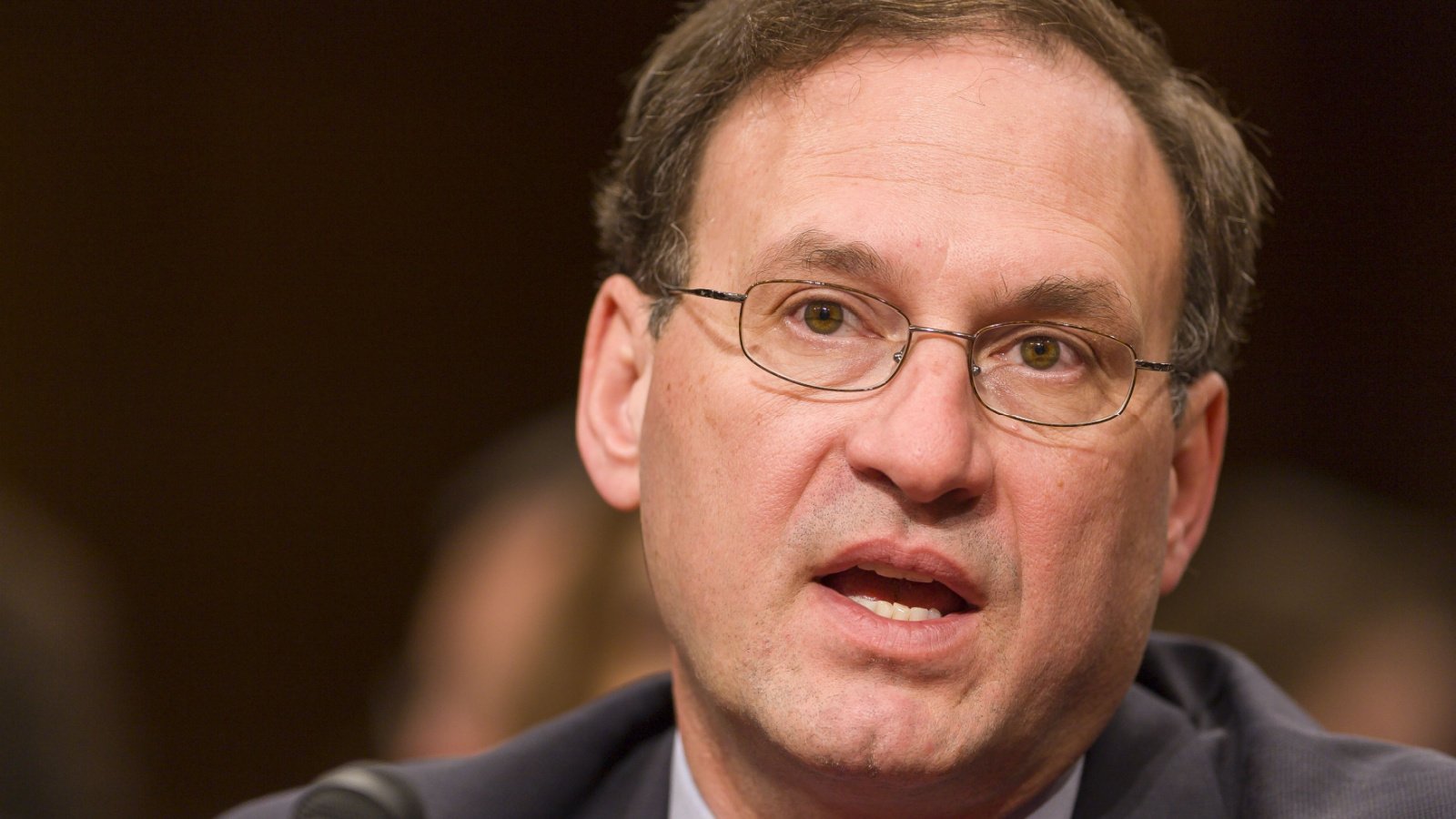
U.S. Supreme Court Justices Alito and Thomas expressed their dissent in the decision not to hear the case, stating, “What the Fourth Circuit majority held, in essence, is that intentional racial discrimination is constitutional so long as it is not too severe.” Alito and Thomas claim the non-explicit ways that TJ was able to gather diversity information – through economic indicators and open response application questions – oppose the Supreme Court’s intent in the 2023 decision to bar race-based admissions policies.
Schools Uncertain How to Comply While Increasing Diversity

Now that the Court has refused to engage with the TJ case, schools remain uncertain about how to legally pursue diversity goals without running afoul of the judiciary or bringing expensive and undesirable lawsuits to their doorstep.
Dissent Signals Ideological Divides Within Court

Justices Alito and Thomas criticized the decision not to review the case, underscoring the ideological divides within the Court and the broader national debate over how to achieve educational equity and diversity.
Implications for Educational Institutions Nationwide

The refusal to hear the case could have far-reaching implications for educational institutions nationwide as they navigate the complex landscape of admissions policies. Schools seeking to enhance diversity without directly considering race must now carefully craft their admissions policies.
Debate Over Race, Education, and Equality in America

The Court’s decision not to hear the TJ case may encourage other institutions to adopt similar race-neutral policies. However, the risk of legal challenges remains, given the contentious and evolving nature of the debate over race, education, and equality in America.
Recent History of Supreme Court on Affirmative Action

The recent history of the Supreme Court’s rulings on race-based admissions policies has been marked by significant decisions and nondecisions (choosing not to hear an appeal to the TJ policy) that leave admission departments in constitutional limbo with conflicting messages regarding just how much they can include racial considerations.



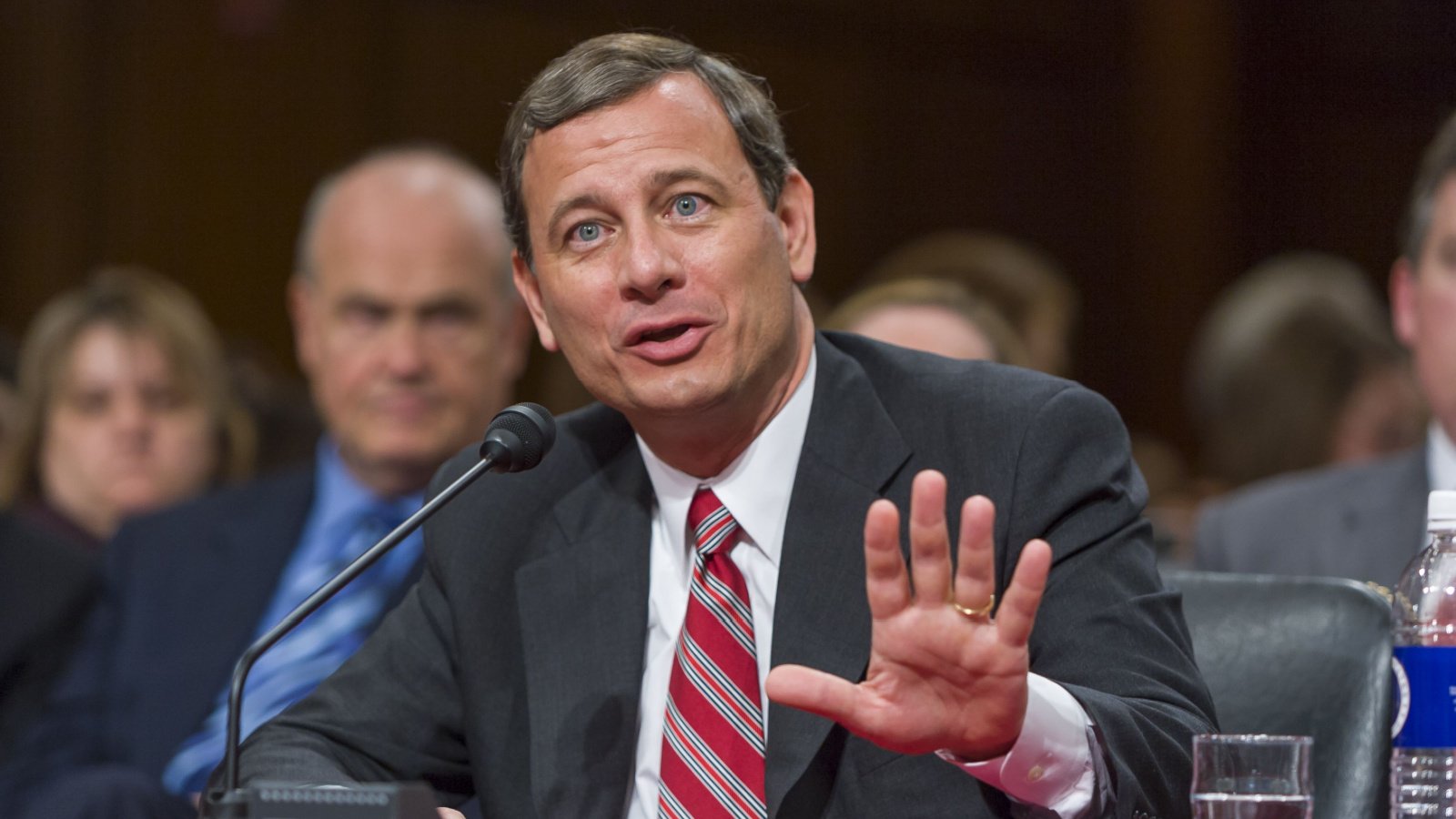
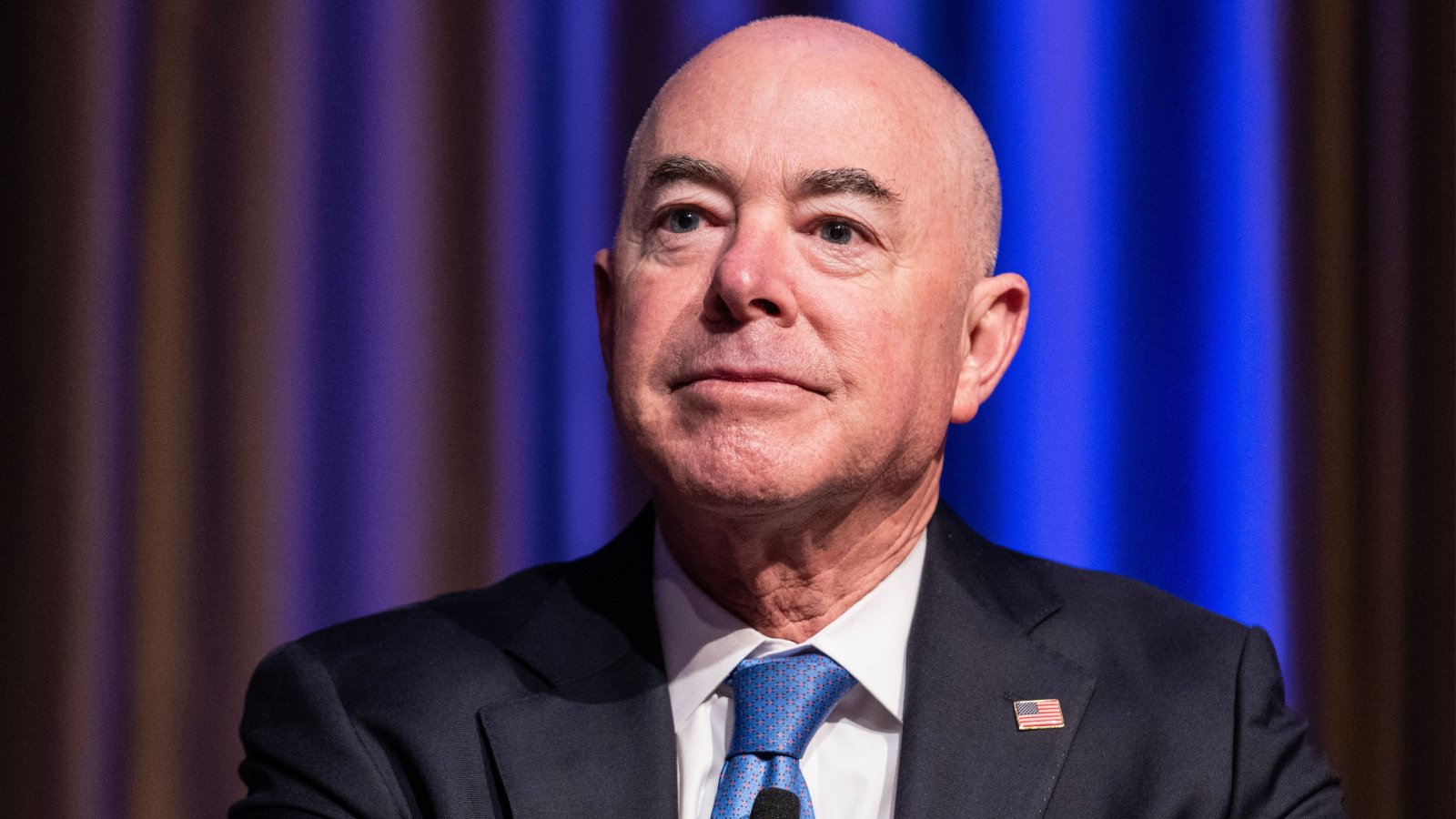
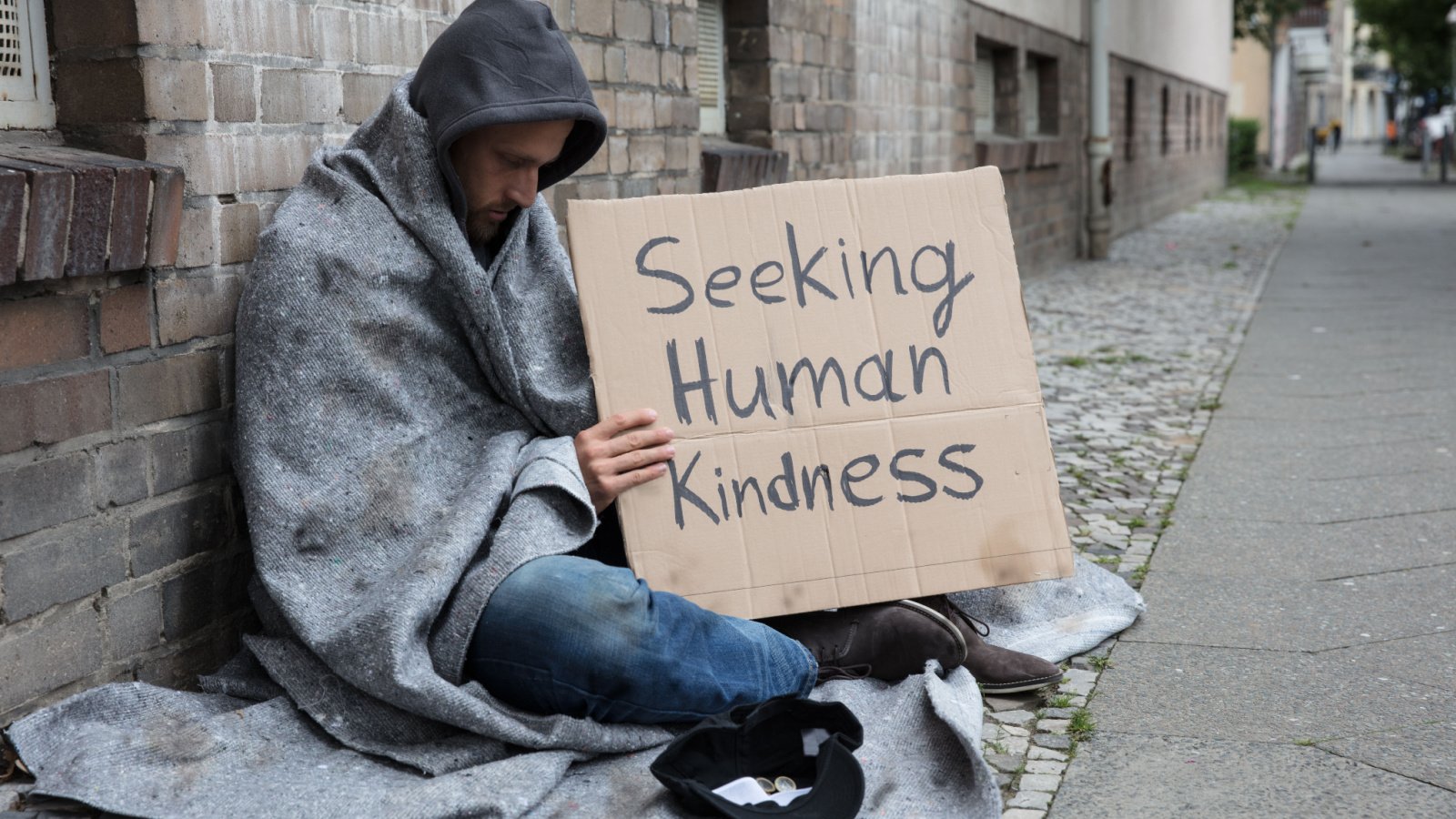


https://semaglupharm.shop/# can you drink alcohol while taking rybelsus
CrestorPharm No doctor visit required statins CrestorPharm
Order Rybelsus discreetly: rybelsus side effects – Rybelsus online pharmacy reviews
PredniPharm: Predni Pharm – PredniPharm
https://semaglupharm.com/# Online pharmacy Rybelsus
CrestorPharm Crestor 10mg / 20mg / 40mg online CrestorPharm
https://semaglupharm.com/# rybelsus classification
CrestorPharm: Buy statins online discreet shipping – Crestor Pharm
п»їBuy Lipitor without prescription USA: is atorvastatin a statin – what is the difference between atorvastatin and rosuvastatin
SemagluPharm SemagluPharm fda rybelsus
http://semaglupharm.com/# Semaglu Pharm
Safe delivery in the US: Rybelsus for blood sugar control – Semaglu Pharm
best time to take cholesterol medicine rosuvastatin: CrestorPharm – CrestorPharm
buy prednisone canadian pharmacy pharmacy cost of prednisone compare prednisone prices
http://semaglupharm.com/# metformin vs rybelsus for weight loss
LipiPharm: does lipitor cause dementia – Discreet shipping for Lipitor
Buy statins online discreet shipping: CrestorPharm – crestor and memory loss
Order cholesterol medication online can lipitor cause low blood pressure Discreet shipping for Lipitor
https://semaglupharm.com/# Semaglu Pharm
Semaglu Pharm: SemagluPharm – Affordable Rybelsus price
Lipi Pharm: how much will 10 mg of atorvastatin lower cholesterol – LipiPharm
Order cholesterol medication online Lipi Pharm what can i take instead of lipitor
http://semaglupharm.com/# can you take rybelsus and omeprazole together
1 mg prednisone daily: PredniPharm – prednisone 20 mg purchase
can i drink alcohol while taking lipitor: do you lose weight on lipitor – high intensity statin atorvastatin
https://semaglupharm.shop/# SemagluPharm
rosuvastatin calcium coupon Affordable cholesterol-lowering pills Buy statins online discreet shipping
generic prednisone tablets: prednisone cream rx – Predni Pharm
rosuvastatin vs atorvastatin in diabetes: Crestor home delivery USA – CrestorPharm
https://semaglupharm.com/# Affordable Rybelsus price
Predni Pharm over the counter prednisone pills buy prednisone from india
can i drink coffee 30 minutes after taking rybelsus: SemagluPharm – SemagluPharm
can you stop taking crestor without side effects: CrestorPharm – crestor generic name
https://semaglupharm.com/# Semaglu Pharm
rybelsus 7 mg cost semaglutide pills weight loss Semaglu Pharm
does semaglutide cause diarrhea: SemagluPharm – rybelsus price in india
https://semaglupharm.shop/# No prescription diabetes meds online
Crestor mail order USA: how long does it take for crestor to start working – Buy cholesterol medicine online cheap
high intensity crestor dose: Crestor 10mg / 20mg / 40mg online – Buy statins online discreet shipping
https://semaglupharm.com/# SemagluPharm
buy prednisone nz: PredniPharm – PredniPharm
CrestorPharm CrestorPharm CrestorPharm
Predni Pharm: Predni Pharm – PredniPharm
https://semaglupharm.shop/# SemagluPharm
Crestor 10mg / 20mg / 40mg online: Crestor Pharm – Crestor Pharm
SemagluPharm SemagluPharm Semaglu Pharm
http://semaglupharm.com/# SemagluPharm
crestor 5mg generic: CrestorPharm – teva-rosuvastatin 10 mg
Semaglu Pharm: Semaglu Pharm – rybelsus costco mexico
buying from online mexican pharmacy Meds From Mexico Meds From Mexico
https://medsfrommexico.com/# Meds From Mexico
India Pharm Global: reputable indian pharmacies – top 10 pharmacies in india
buy prescription drugs from india: buy prescription drugs from india – India Pharm Global
indian pharmacies safe India Pharm Global buy prescription drugs from india
https://medsfrommexico.shop/# mexican pharmaceuticals online
canadian medications: Canada Pharm Global – safe canadian pharmacy
canadian pharmacy sarasota: canadian world pharmacy – canadian pharmacy meds review
https://medsfrommexico.shop/# Meds From Mexico
Meds From Mexico Meds From Mexico Meds From Mexico
canadian pharmacy world: Canada Pharm Global – onlinepharmaciescanada com
mexican pharmaceuticals online: Meds From Mexico – Meds From Mexico
https://canadapharmglobal.shop/# ed meds online canada
canadian drug Canada Pharm Global drugs from canada
India Pharm Global: indian pharmacies safe – top 10 pharmacies in india
https://medsfrommexico.shop/# Meds From Mexico
medicine in mexico pharmacies: pharmacies in mexico that ship to usa – Meds From Mexico
cheapest online pharmacy india: India Pharm Global – indian pharmacy online
canadian pharmacy meds Canada Pharm Global canada ed drugs
https://medsfrommexico.shop/# mexico pharmacies prescription drugs
buying prescription drugs in mexico: Meds From Mexico – Meds From Mexico
Meds From Mexico: Meds From Mexico – mexican border pharmacies shipping to usa
mail order pharmacy india India Pharm Global reputable indian online pharmacy
canadian drugs pharmacy: Canada Pharm Global – canadian drug stores
canadian neighbor pharmacy: Canada Pharm Global – online canadian pharmacy reviews
best india pharmacy India Pharm Global Online medicine order
India Pharm Global: India Pharm Global – Online medicine order
Meds From Mexico Meds From Mexico Meds From Mexico
https://medsfrommexico.shop/# mexican online pharmacies prescription drugs
canada ed drugs: safe canadian pharmacy – canadian pharmacy 24 com
mexican drugstore online: Meds From Mexico – mexico drug stores pharmacies
best online pharmacies in mexico Meds From Mexico Meds From Mexico
http://canadapharmglobal.com/# rate canadian pharmacies
EFarmaciaIt: EFarmaciaIt – EFarmaciaIt
parafarmacia canarias marГa segura. centro veterinario. precio todacitan
Svenska Pharma: vГ¤rmeborste billig – privatisering apotek
https://svenskapharma.shop/# Svenska Pharma
Papa Farma: Papa Farma – Papa Farma
primolut nor senza ricetta prezzo EFarmaciaIt ryaltris spray per quanto tempo
https://papafarma.com/# Papa Farma
Svenska Pharma: dygnet runt apotek – Svenska Pharma
diflucan sciroppo bambini: farmacie dr max italia – EFarmaciaIt
http://raskapotek.com/# Rask Apotek
apotek stengetid apotek blodtrykksmГҐler ricinusolje apotek
cialis 20 mg amazon: dodot talla 1 – Papa Farma
ofertas farmacia: Papa Farma – farmacia online envГo gratis sin pedido mГnimo
https://svenskapharma.com/# Svenska Pharma
farmacia scalapay effimia prezzo culetto rosso neonato gentalyn
EFarmaciaIt: EFarmaciaIt – cos’ГЁ il nicetile
https://svenskapharma.com/# Svenska Pharma
billigt proteinpulver Svenska Pharma Svenska Pharma
farmacia alicante: Papa Farma – Papa Farma
Papa Farma: movicol spanien – farmacia abierta santander
http://raskapotek.com/# pore strips apotek
clavulin in gravidanza artrosilene gel miglior prezzo EFarmaciaIt
sura uppstГ¶tningar hjГ¤rtat: Svenska Pharma – Svenska Pharma
bantningspiller apotek: apotek lager – Svenska Pharma
https://raskapotek.shop/# Rask Apotek
vertiserc generico prezzo EFarmaciaIt EFarmaciaIt
http://papafarma.com/# ozempic tenerife
Papa Farma: Papa Farma – Papa Farma
cos online shop tiche 125 prezzo EFarmaciaIt
Svenska Pharma: apotek hemleverans recept – babypaket apotek
https://papafarma.shop/# Papa Farma
Svenska Pharma: ska man sova med bandage – Svenska Pharma
Rask Apotek Rask Apotek borax apotek
Svenska Pharma: Svenska Pharma – deodorant barn 8 ГҐr
http://papafarma.com/# codigo farmacia barata
wegovy espaГ±a comprar: cuando hace efecto movicol – Papa Farma
droguerias parafarmacias zaragoza aceite cbd 10 opiniones
https://efarmaciait.shop/# EFarmaciaIt
Svenska Pharma: Svenska Pharma – apoteka online
farmacias cerca de mi: farmacia 24 horas cГЎdiz capital – apotheke line
https://svenskapharma.com/# henna hårfärg apotek
Svenska Pharma cbd apotek Svenska Pharma
urin stix apotek: Rask Apotek – apotek dГёgnГҐpen
Svenska Pharma: Svenska Pharma – Svenska Pharma
https://svenskapharma.com/# Svenska Pharma
termometer apotek Svenska Pharma Svenska Pharma
Pharma Connect USA: custom rx pharmacy – PharmaConnectUSA
commande pharmacie en ligne gdc boutique peut-on prendre 2 cialis 5 mg
Pharma Jetzt: PharmaJetzt – Pharma Jetzt
http://pharmajetzt.com/# Pharma Jetzt
Pharma Confiance: Pharma Confiance – Pharma Confiance
Pharma Confiance ketoprofene quand le prendre l’amoxicilline soigne quoi
https://medicijnpunt.com/# online apotheek zonder recept
PharmaJetzt: internetapotheke versandkostenfrei – PharmaJetzt
PharmaJetzt: PharmaJetzt – ahop apotheke
Pharma Confiance 120 ml de lait en g pharma france
http://pharmaconfiance.com/# Pharma Confiance
crГЁme vitamine k pharmacie: Pharma Confiance – 34 cl en gramme
medicijn bestellen: medicijnen apotheek – belgische online apotheek
https://pharmajetzt.com/# apoteke online
monuril mГ©dicament: Pharma Confiance – Pharma Confiance
apotheke medikamente PharmaJetzt Pharma Jetzt
https://medicijnpunt.shop/# recept online
europese apotheek: medicijnen bestellen zonder recept – medicijne
pharmacie de garde lyon 9: shampoing so bio – Pharma Confiance
online apotheke versandkostenfrei Pharma Jetzt medikamente online bestellen
https://pharmajetzt.shop/# PharmaJetzt
Medicijn Punt: MedicijnPunt – apteka holandia
Pharma Jetzt: ship apotheke – apotheke online gГјnstig
MedicijnPunt medicijnen online kopen online apotheken
http://pharmajetzt.com/# Pharma Jetzt
no rx pharmacy: escitalopram online pharmacy – warfarin continuing education pharmacy
le chat bleu commande en ligne: direct pharma – Pharma Confiance
pharmacie homГ©opathie paris 16 pharmacie de Pharma Confiance
MedicijnPunt: online apotheek zonder recept ervaringen – medicatie apotheek
ihre online apotheke: mediherz versandapotheke online shop bestellen – versandapotheken
Medicijn Punt medicijnen apotheek Medicijn Punt
https://medicijnpunt.com/# beste online apotheek
PharmaJetzt: tabletten kaufen – nutrim kapseln erfahrungen
online pharmacy reviews adipex: mexican pharmacy lexapro – PharmaConnectUSA
PharmaJetzt Pharma Jetzt PharmaJetzt
https://pharmajetzt.com/# shop apothrke
online pharmacy college: how much does viagra cost in a pharmacy – rohypnol pharmacy
spray pour huile d’olive: pharmacie gratentour – pharmacie on line
online pharmacy overnight delivery PharmaConnectUSA legit non prescription pharmacies
http://pharmajetzt.com/# PharmaJetzt
pille kaufen apotheke: aptoheke – PharmaJetzt
Pharma Connect USA: aciclovir pharmacy – warfarin continuing education pharmacy
buying ambien online pharmacy PharmaConnectUSA baclofen river pharmacy
https://pharmajetzt.shop/# PharmaJetzt
crГЁme betamethasone 0 05: prix viagra 50 mg france – pharmacie ouvert 8h
pharmacie commerce: protГЁge orteil – Pharma Confiance
dokter online medicijnen bestellen apotheek online nederland medicijn
medicijnen online bestellen: Medicijn Punt – medicatie bestellen
https://pharmaconnectusa.shop/# PharmaConnectUSA
PharmaJetzt: medikamente auf rechnung – Pharma Jetzt
Medicijn Punt Medicijn Punt MedicijnPunt
Pharma Jetzt: Pharma Jetzt – Pharma Jetzt
http://pharmaconfiance.com/# Pharma Confiance
gГјnstige apotheke online shop: PharmaJetzt – Pharma Jetzt
PharmaConnectUSA pharmacy rx Pharma Connect USA
online apotheke frankreich: ongle amande noir – quel est le prix d’une boГ®te de sildГ©nafil ?
https://pharmaconnectusa.shop/# best online pharmacy wellbutrin
gummies pharmacie: detranspirant tete – brosse dent sonique
bГ©bГ© trГЁs tonique 1 mois: Pharma Confiance – Pharma Confiance
http://pharmaconfiance.com/# pharmacie de garde grasse
PharmaConnectUSA: PharmaConnectUSA – anti viral
PharmaJetzt: PharmaJetzt – Pharma Jetzt
http://pharmaconnectusa.com/# india online pharmacy
PharmaConnectUSA: Pharma Connect USA – Cialis Oral Jelly
rue du commandant charcot bordeaux: easypharmacie en ligne – Pharma Confiance
https://pharmaconnectusa.shop/# PharmaConnectUSA
Medicijn Punt: Medicijn Punt – medicijnen snel bestellen
https://pharmajetzt.com/# Pharma Jetzt
online medicijnen kopen: Medicijn Punt – belgie apotheek online
Medicijn Punt: medicatie apotheker review – online apotheek
https://pharmaconnectusa.com/# Pharma Connect USA
Pharma Jetzt: PharmaJetzt – medikamente preisvergleich testsieger
https://pharmaconfiance.shop/# pharmacies
ou se procurer du viagra: pharmacie de la place toulouse – Pharma Confiance
Pharma Connect USA: auto rx pharmacy – amlodipine besylate online pharmacy
https://pharmaconfiance.com/# Pharma Confiance
PharmaConnectUSA: online pharmacy uk viagra – no prescription online pharmacy
Pharma Confiance: parapharmacie granville – kamagra marseille
https://pharmaconfiance.shop/# Pharma Confiance
PharmaConnectUSA: PharmaConnectUSA – Pharma Connect USA
ventoline en ligne: livre pharmacie – j ai pris 2 doliprane 1000 au lieu de 1
Pharma Confiance: acheter stromectol – meilleur crГЁme anti ride 60 millions de consommateur 2022
shop apotheke meine bestellungen: online medikamente – onlineapotheke
https://pharmajetzt.shop/# arznei günstig
online apotheke wegovy: PharmaJetzt – beste online-apotheke ohne rezept
online pharmacy netherlands: Medicijn Punt – mijn apotheek online
https://medicijnpunt.com/# Medicijn Punt
chat gpd: quand prendre l’amoxicilline – diffГ©rence pharmacie parapharmacie
PharmaConnectUSA: klonopin pharmacy online – PharmaConnectUSA
pha pompes: pharmacie caen ouverte aujourd’hui – mГ©tronidazole chat
http://pharmajetzt.com/# Pharma Jetzt
de apotheker: MedicijnPunt – MedicijnPunt
apotheke auf rechnung bestellen apotheken online apothecke
belgische online apotheek: MedicijnPunt – farmacie online
PharmaConnectUSA: Pharma Connect USA – Pharma Connect USA
http://medicijnpunt.com/# Medicijn Punt
luitpoldapotheke bad steben: Pharma Jetzt – PharmaJetzt
Pharma Connect USA: american pharmacy viagra – Pharma Connect USA
ons medicatie voor apotheken recept medicijn Medicijn Punt
https://pharmaconnectusa.com/# online pharmacy ambien generic
Pharma Jetzt: internet apotheke deutschland – internet apotheke selbitz
Pharma Confiance: Pharma Confiance – Pharma Confiance
online apothee: apothekenversand – Pharma Jetzt
medikamente bestellen Pharma Jetzt medikamente auf rechnung
https://medicijnpunt.shop/# netherlands online pharmacy
apteka nl online: MedicijnPunt – MedicijnPunt
misoprostol online pharmacy: target pharmacy cipro – prozac online pharmacy no prescription
Pharma Confiance: pharmacie caen – diffГ©rence entre parapharmacie et pharmacie
http://medicijnpunt.com/# belgie apotheek online
qu’est-ce que le ketoprofene: Pharma Confiance – Pharma Confiance
phГ rmacie: Pharma Confiance – avene shampoing
skelaxin online pharmacy: Pharma Connect USA – Pharma Connect USA
https://medicijnpunt.com/# Medicijn Punt
misoprostol pharmacy cost PharmaConnectUSA sam’s club pharmacy viagra price
wellbutrin people’s pharmacy: medical pharmacies – PharmaConnectUSA
http://medicijnpunt.com/# online medicijnen bestellen apotheek
online apotheek goedkoper: Medicijn Punt – Medicijn Punt
MedicijnPunt: pharmacy nl – Medicijn Punt
Pharma Confiance Pharma Confiance Pharma Confiance
vГ©tГ©rinaires de garde autour de moi: grossiste gel douche – Pharma Confiance
http://medicijnpunt.com/# MedicijnPunt
pharmacie pres d’ici: Pharma Confiance – marque de sirop professionnel
doxycycline prix pharmacie atida | santГ©discount parapharmacie catalogue
Pharma Jetzt: Pharma Jetzt – internet apotheke test
Pharma Confiance: amoxicilline enfant 3 ans – pharmacie nationale 7
https://pharmaconnectusa.shop/# Pharma Connect USA
TijuanaMeds: п»їbest mexican online pharmacies – mexican border pharmacies shipping to usa
purple pharmacy mexico price list: TijuanaMeds – best online pharmacies in mexico
mexican mail order pharmacies medicine in mexico pharmacies TijuanaMeds
https://indimedsdirect.shop/# IndiMeds Direct
canada drugs: CanRx Direct – canadian pharmacy victoza
mexican border pharmacies shipping to usa: TijuanaMeds – TijuanaMeds
buying prescription drugs in mexico mexican rx online TijuanaMeds
top 10 pharmacies in india: IndiMeds Direct – indian pharmacies safe
http://tijuanameds.com/# TijuanaMeds
best online canadian pharmacy CanRx Direct canadian pharmacy online ship to usa
IndiMeds Direct: buy medicines online in india – india online pharmacy
https://canrxdirect.shop/# canadian discount pharmacy
canadian medications CanRx Direct canadian discount pharmacy
buy prescription drugs from india: IndiMeds Direct – mail order pharmacy india
http://indimedsdirect.com/# top 10 online pharmacy in india
canadianpharmacymeds com CanRx Direct global pharmacy canada
top online pharmacy india: IndiMeds Direct – indian pharmacy
https://tijuanameds.com/# TijuanaMeds
buying prescription drugs in mexico mexico pharmacies prescription drugs TijuanaMeds
IndiMeds Direct: IndiMeds Direct – india pharmacy
https://tijuanameds.shop/# medicine in mexico pharmacies
Online medicine home delivery IndiMeds Direct п»їlegitimate online pharmacies india
cheapest pharmacy canada: www canadianonlinepharmacy – canadian pharmacy ltd
medicine in mexico pharmacies: TijuanaMeds – TijuanaMeds
rate canadian pharmacies canadian mail order pharmacy canadian pharmacy 1 internet online drugstore
http://indimedsdirect.com/# IndiMeds Direct
IndiMeds Direct: IndiMeds Direct – IndiMeds Direct
online viagra pharmacy: RxFree Meds – RxFree Meds
RxFree Meds: Persantine – RxFree Meds
https://rxfreemeds.com/# RxFree Meds
RxFree Meds lortab online pharmacy RxFree Meds
iraltone forte prospecto: farmacias de – Farmacia Asequible
http://rxfreemeds.com/# actonel online pharmacy
enclomiphene citrate: enclomiphene for men – enclomiphene best price
RxFree Meds participating lipitor pharmacy RxFree Meds
RxFree Meds: RxFree Meds – RxFree Meds
Farmacia Asequible: Farmacia Asequible – Farmacia Asequible
https://enclomiphenebestprice.shop/# enclomiphene buy
RxFree Meds RxFree Meds RxFree Meds
online pharmacy acyclovir: sumatriptan pharmacy – domperidone australia pharmacy
enclomiphene testosterone: enclomiphene best price – enclomiphene for sale
https://enclomiphenebestprice.shop/# enclomiphene for men
enclomiphene buy: enclomiphene for men – enclomiphene for men
enclomiphene citrate: enclomiphene for sale – enclomiphene for men
https://farmaciaasequible.com/# parafarmacia envio gratis
https://farmaciaasequible.shop/# Farmacia Asequible
farmacia 24 h: Farmacia Asequible – Farmacia Asequible
online pharmacy fincar viagra generic pharmacy RxFree Meds
http://farmaciaasequible.com/# farmacia online italia
north drug store 365 pharmacy kamagra RxFree Meds
buy enclomiphene online: enclomiphene for men – enclomiphene citrate
https://farmaciaasequible.com/# Farmacia Asequible
enclomiphene price enclomiphene buy enclomiphene
Farmacia Asequible: online pharmacy opiniones – farmacias top cГіdigo descuento
https://enclomiphenebestprice.shop/# enclomiphene best price
http://enclomiphenebestprice.com/# enclomiphene for sale
farmacias cercanas a mi ubicaciГіn actual Farmacia Asequible farmacia y parafarmacia online
buy enclomiphene online: enclomiphene best price – buy enclomiphene online
barata farmacia viagra spain fisio x tu
usa online pharmacy viagra people’s pharmacy synthroid health rx pharmacy
Periactin: RxFree Meds – online pharmacy neurontin
Farmacia Asequible movicol oral farma barata
enclomiphene: enclomiphene – enclomiphene price
enclomiphene for sale enclomiphene online enclomiphene buy
enclomiphene for men enclomiphene enclomiphene online
tadalafilo 5 mg 28 comprimidos precio: Farmacia Asequible – Farmacia Asequible
RxFree Meds: ventolin mexican pharmacy – cialis online american pharmacy
Farmacia Asequible spanish pharmacy Farmacia Asequible
tadacip online pharmacy real online pharmacy RxFree Meds
comprar cialis generico online: Farmacia Asequible – dodot 6 plus
enclomiphene citrate enclomiphene for men enclomiphene
Farmacia Asequible Farmacia Asequible Farmacia Asequible
the box spain opiniones: Farmacia Asequible – efectos secundarios de movicol
Farmacia Asequible Farmacia Asequible mejor mГ©dico digestivo en bilbao
farmacias.com opiniones Farmacia Asequible Farmacia Asequible
cepillo oral b no funciona: Farmacia Asequible – Farmacia Asequible
pastilla del dГa despuГ©s precio madrid Farmacia Asequible Farmacia Asequible
RxFree Meds: RxFree Meds – RxFree Meds
RxFree Meds rxpharmacycoupons depo provera online pharmacy
Farmacia Asequible: farmacion – antinal espaГ±a
Farmacia Asequible farmacias abiertas hoy valladolid gelasimi para que sirve
RxFree Meds: RxFree Meds – RxFree Meds
Farmacia Asequible: Farmacia Asequible – Farmacia Asequible
Farmacia Asequible parfarmacia Farmacia Asequible
https://enclomiphenebestprice.com/# enclomiphene
Farmacia Asequible: Farmacia Asequible – cabezales braun
Farmacia Asequible: Farmacia Asequible – movicol diarrea
http://enclomiphenebestprice.com/# enclomiphene for men
super saver pharmacy mental illness online pharmacy paypal
canadian mail order pharmacy: levitra online us pharmacy – canadian pharmacy ltd
https://indomedsusa.shop/# indian pharmacies safe
purple pharmacy mexico price list mexican mail order pharmacies mexican online pharmacies prescription drugs
medicine in mexico pharmacies: mexican rx online – MexiMeds Express
IndoMeds USA: indian pharmacy – IndoMeds USA
http://indomedsusa.com/# legitimate online pharmacies india
Dostinex MediSmart Pharmacy finasteride united pharmacy
MexiMeds Express: MexiMeds Express – reputable mexican pharmacies online
http://meximedsexpress.com/# MexiMeds Express
canadian pharmacy: MediSmart Pharmacy – www canadianonlinepharmacy
Online medicine home delivery indian pharmacy online buy prescription drugs from india
buying prescription drugs in mexico: buying prescription drugs in mexico online – MexiMeds Express
http://medismartpharmacy.com/# good value pharmacy
canadian drug pharmacy: MediSmart Pharmacy – canadian pharmacy tampa
indian pharmacy paypal: reputable indian online pharmacy – top online pharmacy india
Online medicine order IndoMeds USA IndoMeds USA
http://medismartpharmacy.com/# house pharmacy finpecia
IndoMeds USA: mail order pharmacy india – reputable indian online pharmacy
mexican online pharmacies prescription drugs: MexiMeds Express – MexiMeds Express
mexican pharmaceuticals online MexiMeds Express medicine in mexico pharmacies
https://medismartpharmacy.com/# estradiol patch online pharmacy
tylenol 3 online pharmacy: MediSmart Pharmacy – brooks pharmacy store
MexiMeds Express: buying from online mexican pharmacy – mexican border pharmacies shipping to usa
https://indomedsusa.shop/# IndoMeds USA
IndoMeds USA: IndoMeds USA – IndoMeds USA
canadian online drugstore: clindamycin pharmacy price – reputable canadian online pharmacies
IndoMeds USA IndoMeds USA online pharmacy india
https://meximedsexpress.shop/# mexican border pharmacies shipping to usa
medicine in mexico pharmacies: best online pharmacies in mexico – mexico drug stores pharmacies
MexiMeds Express: MexiMeds Express – MexiMeds Express
buy medicines online in india IndoMeds USA pharmacy website india
https://medismartpharmacy.shop/# asda pharmacy mefloquine
Vermox: MediSmart Pharmacy – best online pharmacy adipex
buy prescription drugs from india: indianpharmacy com – IndoMeds USA
https://medismartpharmacy.shop/# online veterinary pharmacy
walgreen pharmacy hours by store levitra prices pharmacy top 10 pharmacy websites
medicine in mexico pharmacies: purple pharmacy mexico price list – mexican pharmaceuticals online
https://indomedsusa.shop/# IndoMeds USA
www canadianonlinepharmacy: MediSmart Pharmacy – buy canadian drugs
IndoMeds USA reputable indian online pharmacy buy medicines online in india
IndoMeds USA: indian pharmacy paypal – IndoMeds USA
https://meximedsexpress.shop/# mexican drugstore online
canadian pharmacy 24h com safe: MediSmart Pharmacy – canada pharmacy world
clozapine polypharmacy triamcinolone acetonide cream pharmacy non prescription online pharmacy
warfarin continuing education pharmacy: MediSmart Pharmacy – online pharmacy uk
https://meximedsexpress.com/# MexiMeds Express
online shopping pharmacy india buy prescription drugs from india indian pharmacy
https://medismartpharmacy.com/# doxycycline hyclate online pharmacy
propecia pharmacy uk: MediSmart Pharmacy – online overseas pharmacy
Aristocort MediSmart Pharmacy lorazepam fearpharmacy
https://meximedsexpress.com/# MexiMeds Express
mexico pharmacies prescription drugs: MexiMeds Express – pharmacies in mexico that ship to usa
best online pharmacies in mexico MexiMeds Express reputable mexican pharmacies online
https://indomedsusa.com/# IndoMeds USA
mexican drugstore online: purple pharmacy mexico price list – buying from online mexican pharmacy
celebrex pharmacy coupon MediSmart Pharmacy magellan rx pharmacy help desk
https://medismartpharmacy.com/# cialis india pharmacy
indianpharmacy com: IndoMeds USA – IndoMeds USA
wellbutrin indian pharmacy MediSmart Pharmacy legit online pharmacy klonopin
https://meximedsexpress.com/# mexico drug stores pharmacies
online pharmacy greece: the best online pharmacy – what’s the best online pharmacy
http://clinicagaleno.com/# farmacia genova online
ascarilen intrarosa ovuli prezzo testoviron 250 fiale compra online
douleur dentaire medicament sans ordonnance: PharmaDirecte – achat sildenafil
https://clinicagaleno.com/# seidivid farmacia online
farmacia vitoria online Clinica Galeno farmacia veterinaria online spedizione gratuita
cialis 20 mg prix: viagra generique – a derma epitheliale ah duo
https://clinicagaleno.com/# test de saliva farmacia online
dГ©contractant musculaire sans ordonnance en pharmacie avГЁne cleanance hydra crГЁme lavante apaisante prix sildenafil 50mg
epitheliale ah duo: PharmaDirecte – nicopatch 21 mg prix
farmacia online l vazquez comprar diureticos sin receta puedo comprar monurol sin receta
comprar stopcold online: farmacia online comprar mascarilla ffp2 – donde comprar ritalin sin receta
https://ordinasalute.shop/# aircort aerosol adulti
silvederma se puede comprar sin receta farmacia malaga online bimanan comprar amoxicilina sin receta
se puede comprar lexatin sin receta medica: blastoestimulina Гіvulos comprar sin receta – se puede comprar rivotril sin receta
https://pharmadirecte.com/# symbicort 400 sans ordonnance
farmacia online ffp3 puedo comprar ovulos sin receta farmacia benidorm online
tadalafil prix 10mg: mГ©dicament angine sans ordonnance – pommade antibactГ©rienne sans ordonnance
https://clinicagaleno.com/# el ibuprofeno se puede comprar sin receta
travatan sans ordonnance PharmaDirecte cialis 10mg sans ordonnance
gel douche ducray: PharmaDirecte – diprosone sans ordonnance prix
https://ordinasalute.com/# crema antibiotica per brufoli sottopelle
http://zorgpakket.com/# pharma apotheek
online apotheken: Medicijn Punt – medicijnlijst apotheek
http://tryggmed.com/# skin tag remover apotek
apotek med hemleverans SnabbApoteket apotek glasögon
http://zorgpakket.com/# apotheker online
tvidler apotek: lavt stoffskifte test apotek – apotek polen
skjeggsjampo apotek hydroxychloroquine apotek arnica krem apotek
http://tryggmed.com/# rensesjampo apotek
recept hemleverans: Snabb Apoteket – apotek coronatest
http://tryggmed.com/# apotek lГёrdag
https://tryggmed.shop/# apotek priser
koronavaksine på apotek apotek åpent skjærtorsdag legevakt apotek
munnskyllevann apotek: tungeskrape apotek – hudpleie apotek
https://zorgpakket.com/# internet apotheek
concealer före eller efter foundation Snabb Apoteket vad betyder filmdragerad tablett
gipsbandage apotek: Snabb Apoteket – koksaltlГ¶sning apotek
https://zorgpakket.com/# medicijnen aanvragen
menskopp apotek: Snabb Apoteket – apotek retinol
https://snabbapoteket.shop/# nätapotek
online medicijnen bestellen: online apotheek nederland zonder recept – mijn medicijnkosten
halksockor vuxna apotek apotek logga in recept isopropanol apotek
https://snabbapoteket.shop/# mina receot
https://expresscarerx.online/# pharmacy dispensing clozaril
pharmacy website india: best india pharmacy – IndiaMedsHub
sildenafil mexico online get viagra without prescription from mexico mexican pharmacy for americans
https://medimexicorx.shop/# MediMexicoRx
mail order pharmacy india: IndiaMedsHub – IndiaMedsHub
top 10 online pharmacy in india: IndiaMedsHub – IndiaMedsHub
best mexican pharmacy online MediMexicoRx trusted mexican pharmacy
https://indiamedshub.shop/# IndiaMedsHub
https://medimexicorx.com/# MediMexicoRx
Online medicine order: online shopping pharmacy india – india pharmacy
https://expresscarerx.online/# prescription pricing
MediMexicoRx trusted mexican pharmacy cheap mexican pharmacy
best provigil pharmacy: metronidazole target pharmacy – ExpressCareRx
MediMexicoRx: accutane mexico buy online – MediMexicoRx
https://expresscarerx.online/# bactrim online pharmacy
http://expresscarerx.org/# adipex pharmacy coupon
prescription drugs mexico pharmacy: real mexican pharmacy USA shipping – mexico pharmacy
indianpharmacy com: IndiaMedsHub – india pharmacy
https://medimexicorx.com/# mexican pharmaceuticals online
IndiaMedsHub reputable indian online pharmacy buy medicines online in india
ExpressCareRx: good online pharmacy – clomid online pharmacy no prescription
https://medimexicorx.com/# buying from online mexican pharmacy
meijer pharmacy lisinopril: rx relief pharmacy – ventolin online pharmacy
cheap mexican pharmacy MediMexicoRx get viagra without prescription from mexico
https://indiamedshub.shop/# IndiaMedsHub
MediMexicoRx: MediMexicoRx – MediMexicoRx
https://expresscarerx.org/# ExpressCareRx
best online pharmacy clomid: ExpressCareRx – cheap viagra online pharmacy prescription
https://medimexicorx.shop/# mexican drugstore online
MediMexicoRx: MediMexicoRx – MediMexicoRx
finasteride mexico pharmacy: mexico pharmacy – MediMexicoRx
india online pharmacy indian pharmacy IndiaMedsHub
https://expresscarerx.org/# zithromax pharmacy price
https://medimexicorx.shop/# mexican pharmaceuticals online
low cost mexico pharmacy online: MediMexicoRx – legit mexican pharmacy without prescription
pharmacy website india IndiaMedsHub Online medicine order
MediMexicoRx: buy propecia mexico – MediMexicoRx
https://expresscarerx.online/# xenical dubai pharmacy
buy Zoloft online: generic sertraline – generic sertraline
Tadalafil From India tadalafil online no rx cheap tadalafil 20mg
https://isotretinoinfromcanada.shop/# order isotretinoin from Canada to US
Tadalafil From India: generic tadalafil no prescription – tadalafil tablets 20 mg india
Propecia for hair loss online: Finasteride From Canada – Propecia for hair loss online
https://tadalafilfromindia.shop/# Cialis without prescription
sertraline online buy Zoloft online without prescription USA buy Zoloft online without prescription USA
https://zoloft.company/# purchase generic Zoloft online discreetly
Lexapro for depression online: Lexapro for depression online – Lexapro for depression online
buy Zoloft online without prescription USA: sertraline online – Zoloft Company
https://lexapro.pro/# lexapro pills for sale
cheap Propecia Canada cheap Propecia Canada generic propecia without rx
Accutane for sale: purchase generic Accutane online discreetly – cheap Accutane
Lexapro for depression online: lexapro 20mg pill – lexapro 20 mg tablet
https://isotretinoinfromcanada.shop/# Accutane for sale
https://finasteridefromcanada.com/# Propecia for hair loss online
Propecia for hair loss online Propecia for hair loss online Propecia for hair loss online
buy Zoloft online: Zoloft for sale – Zoloft for sale
Zoloft Company: cheap Zoloft – sertraline online
https://tadalafilfromindia.com/# Cialis without prescription
generic sertraline sertraline online buy Zoloft online
generic Finasteride without prescription: generic Finasteride without prescription – generic Finasteride without prescription
Lexapro for depression online: where can you buy lexapro – buy lexapro australia
https://zoloft.company/# purchase generic Zoloft online discreetly
http://tadalafilfromindia.com/# cheap Cialis Canada
cheap propecia price Finasteride From Canada cheap Propecia Canada
generic sertraline: sertraline online – purchase generic Zoloft online discreetly
cheap Zoloft: purchase generic Zoloft online discreetly – buy Zoloft online
https://isotretinoinfromcanada.com/# order isotretinoin from Canada to US
cheap Cialis Canada tadalafil free shipping generic Cialis from India
lexapro 20mg pill: Lexapro for depression online – where can i purchase lexapro online
https://finasteridefromcanada.com/# buying cheap propecia without prescription
Finasteride From Canada: Finasteride From Canada – cheap Propecia Canada
https://finasteridefromcanada.shop/# generic Finasteride without prescription
Zoloft for sale generic sertraline purchase generic Zoloft online discreetly
purchase generic Zoloft online discreetly: generic sertraline – generic sertraline
https://isotretinoinfromcanada.shop/# Isotretinoin From Canada
Propecia for hair loss online: generic Finasteride without prescription – Propecia for hair loss online
cost cheap propecia without insurance generic Finasteride without prescription cheap Propecia Canada
http://finasteridefromcanada.com/# generic Finasteride without prescription
how much is lexapro 10 mg: Lexapro for depression online – Lexapro for depression online
buy tadalafil from india: Cialis without prescription – tadalafil 100mg
https://zoloft.company/# Zoloft online pharmacy USA
https://tadalafilfromindia.com/# buy tadalafil india
generic Finasteride without prescription Finasteride From Canada generic Finasteride without prescription
Isotretinoin From Canada: buy Accutane online – cheap Accutane
https://zoloft.company/# Zoloft for sale
Cialis without prescription: cheap Cialis Canada – buy tadalafil online no prescription
Lexapro for depression online Lexapro for depression online buy lexapro
https://finasteridefromcanada.com/# generic Finasteride without prescription
http://isotretinoinfromcanada.com/# Accutane for sale
Finasteride From Canada: Propecia for hair loss online – generic Finasteride without prescription
cheap Cialis Canada tadalafil online no rx tadalafil price
https://lexapro.pro/# lexapro online prescription
tadalafil online no rx: buy Cialis online cheap – Tadalafil From India
get propecia price Finasteride From Canada order propecia without prescription
buy Zoloft online: sertraline online – Zoloft online pharmacy USA
cheap Accutane order isotretinoin from Canada to US generic isotretinoin
https://isotretinoinfromcanada.com/# Accutane for sale
Accutane for sale: purchase generic Accutane online discreetly – generic isotretinoin
Lexapro for depression online Lexapro for depression online Lexapro for depression online
cheap Cialis Canada: Tadalafil From India – generic tadalafil medication
buying generic propecia pill generic propecia pills cheap Propecia Canada
https://finasteridefromcanada.com/# generic Finasteride without prescription
buying propecia without a prescription: Propecia for hair loss online – Propecia for hair loss online
Accutane for sale: isotretinoin online – order isotretinoin from Canada to US
Propecia for hair loss online: Finasteride From Canada – Finasteride From Canada
http://tadalafilfromindia.com/# cheap 10 mg tadalafil
purchase generic Zoloft online discreetly: generic sertraline – sertraline online
Zoloft Company: purchase generic Zoloft online discreetly – cheap Zoloft
Clear Meds Direct ClearMeds Direct amoxicillin azithromycin
WakeMeds RX: where to buy Modafinil legally in the US – safe Provigil online delivery service
can you buy generic clomid without prescription: can i buy generic clomid no prescription – order clomid
https://neuroreliefrx.shop/# cheap gabapentin
Clomid Hub clomid without a prescription can you get cheap clomid without insurance
can i buy generic clomid no prescription: clomid cost – where to get clomid without dr prescription
Clomid Hub Pharmacy: Clomid Hub – order cheap clomid pills
https://wakemedsrx.shop/# nootropic Modafinil shipped to USA
nootropic Modafinil shipped to USA: Modafinil for ADHD and narcolepsy – safe Provigil online delivery service
Wake Meds RX wakefulness medication online no Rx affordable Modafinil for cognitive enhancement
where to buy Modafinil legally in the US: Wake Meds RX – wakefulness medication online no Rx
anti-inflammatory steroids online: prednisone tablet 100 mg – Relief Meds USA
can you get cheap clomid: Clomid Hub Pharmacy – where can i buy generic clomid
cost generic clomid without dr prescription get clomid tablets how can i get cheap clomid no prescription
order corticosteroids without prescription: anti-inflammatory steroids online – prednisone 2.5 mg daily
https://clomidhubpharmacy.com/# Clomid Hub Pharmacy
Clomid Hub Pharmacy: Clomid Hub – how to buy clomid without rx
NeuroRelief Rx gabapentin mg tablets NeuroRelief Rx
anti-inflammatory steroids online: anti-inflammatory steroids online – Relief Meds USA
Relief Meds USA: order corticosteroids without prescription – ReliefMeds USA
order corticosteroids without prescription: ReliefMeds USA – ReliefMeds USA
NeuroRelief Rx NeuroRelief Rx take gabapentin as needed
where to buy cheap clomid pill: order clomid tablets – where to buy cheap clomid without prescription
Modafinil for ADHD and narcolepsy nootropic Modafinil shipped to USA safe Provigil online delivery service
https://clomidhubpharmacy.shop/# buy generic clomid
ReliefMeds USA: non prescription prednisone 20mg – anti-inflammatory steroids online
prescription-free Modafinil alternatives: smart drugs online US pharmacy – WakeMeds RX
anti-inflammatory steroids online ReliefMeds USA order corticosteroids without prescription
average cost of prednisone 20 mg: order corticosteroids without prescription – order corticosteroids without prescription
safe Provigil online delivery service: buy Modafinil online USA – WakeMeds RX
Clomid Hub Pharmacy Clomid Hub Pharmacy clomid for sale
http://wakemedsrx.com/# wakefulness medication online no Rx
prednisone pills 10 mg: order corticosteroids without prescription – cost of prednisone 40 mg
fluoxetine online: gabapentin 400 mg – NeuroRelief Rx
prednisone 10 mg tablet cost order corticosteroids without prescription online order prednisone 10mg
gabapentin und fibromyalgie: NeuroRelief Rx – NeuroRelief Rx
prednisone 10 mg online: prednisone pills 10 mg – prednisone 60 mg
Modafinil for focus and productivity prescription-free Modafinil alternatives affordable Modafinil for cognitive enhancement
http://wakemedsrx.com/# affordable Modafinil for cognitive enhancement
gabapentin acute pain management: NeuroRelief Rx – gabapentin epilepsy treatment
order corticosteroids without prescription: prednisone brand name – order corticosteroids without prescription
Wake Meds RX: where to buy Modafinil legally in the US – order Provigil without prescription
prescription-free Modafinil alternatives: WakeMedsRX – nootropic Modafinil shipped to USA
Relief Meds USA: prednisone – 40 mg daily prednisone
over the counter prednisone cheap: prednisone 40 mg – prednisone 20mg tab price
MexiCare Rx Hub: MexiCare Rx Hub – legit mexican pharmacy without prescription
https://canadrxnexus.shop/# canadapharmacyonline
MexiCare Rx Hub: trusted mexican pharmacy – MexiCare Rx Hub
IndiGenix Pharmacy: cheapest online pharmacy india – indian pharmacy paypal
canadian pharmacies that deliver to the us: canadian online drugs – CanadRx Nexus
MexiCare Rx Hub: order azithromycin mexico – buy antibiotics from mexico
IndiGenix Pharmacy: IndiGenix Pharmacy – reputable indian online pharmacy
Online medicine home delivery: top 10 online pharmacy in india – indian pharmacy paypal
https://indigenixpharm.com/# online pharmacy india
canadian pharmacies that deliver to the us: canadian pharmacy tampa – canadian pharmacy
IndiGenix Pharmacy: indian pharmacy online – indian pharmacy
IndiGenix Pharmacy: best online pharmacy india – indian pharmacy paypal
MexiCare Rx Hub: sildenafil mexico online – MexiCare Rx Hub
canadian pharmacy ed medications: canadian pharmacy – pharmacy canadian superstore
cross border pharmacy canada: CanadRx Nexus – CanadRx Nexus
https://mexicarerxhub.com/# MexiCare Rx Hub
canadian pharmacy prices: reddit canadian pharmacy – online pharmacy canada
indian pharmacies safe: indian pharmacy paypal – IndiGenix Pharmacy
IndiGenix Pharmacy: indian pharmacy paypal – IndiGenix Pharmacy
india pharmacy: IndiGenix Pharmacy – IndiGenix Pharmacy
IndiGenix Pharmacy: IndiGenix Pharmacy – IndiGenix Pharmacy
CanadRx Nexus: CanadRx Nexus – CanadRx Nexus
https://mexicarerxhub.com/# MexiCare Rx Hub
best india pharmacy: india pharmacy mail order – online shopping pharmacy india
indianpharmacy com: IndiGenix Pharmacy – IndiGenix Pharmacy
canadian drugs online: online canadian pharmacy review – canadian pharmacy
CanadRx Nexus: northern pharmacy canada – CanadRx Nexus
indian pharmacy paypal: IndiGenix Pharmacy – IndiGenix Pharmacy
buy propecia mexico: MexiCare Rx Hub – MexiCare Rx Hub
https://indigenixpharm.shop/# IndiGenix Pharmacy
MexiCare Rx Hub: MexiCare Rx Hub – get viagra without prescription from mexico
CanadRx Nexus: ed meds online canada – CanadRx Nexus
IndiGenix Pharmacy: IndiGenix Pharmacy – india online pharmacy
MexiCare Rx Hub: viagra pills from mexico – MexiCare Rx Hub
medication canadian pharmacy: CanadRx Nexus – CanadRx Nexus
canadianpharmacyworld com: canadian pharmacy ltd – CanadRx Nexus
canadian pharmacy 24: canadian pharmacy store – reliable canadian pharmacy
http://indigenixpharm.com/# top 10 pharmacies in india
top 10 online pharmacy in india: IndiGenix Pharmacy – Online medicine home delivery
MexiCare Rx Hub: best mexican online pharmacies – purple pharmacy mexico price list
canadian pharmacy: CanadRx Nexus – the canadian pharmacy
canadian online pharmacy: safe canadian pharmacy – adderall canadian pharmacy
para que sirve rybelsus 7 mg: AsthmaFree Pharmacy – can semaglutide cause pancreatitis
RelaxMedsUSA muscle relaxants online no Rx affordable Zanaflex online pharmacy
Tizanidine 2mg 4mg tablets for sale: affordable Zanaflex online pharmacy – affordable Zanaflex online pharmacy
http://glucosmartrx.com/# AsthmaFree Pharmacy
ventolin online no prescription: buy ventolin – generic for ventolin
buying ventolin in usa ventolin 2mg tablet ventolin evohaler
FluidCare Pharmacy: furosemida 40 mg – FluidCare Pharmacy
AsthmaFree Pharmacy: does rybelsus lower a1c – cost of rybelsus vs ozempic
RelaxMeds USA Tizanidine tablets shipped to USA relief from muscle spasms online
FluidCare Pharmacy: FluidCare Pharmacy – lasix 40 mg
http://relaxmedsusa.com/# order Tizanidine without prescription
ventolin 4mg price: ventolin 2.5 mg – AsthmaFree Pharmacy
furosemide 100mg buy lasix online FluidCare Pharmacy
Tizanidine 2mg 4mg tablets for sale: cheap muscle relaxer online USA – prescription-free muscle relaxants
relief from muscle spasms online: RelaxMeds USA – order Tizanidine without prescription
does rybelsus cause yeast infections AsthmaFree Pharmacy oral semaglutide (rybelsus)
http://fluidcarepharmacy.com/# FluidCare Pharmacy
FluidCare Pharmacy: FluidCare Pharmacy – FluidCare Pharmacy
AsthmaFree Pharmacy: AsthmaFree Pharmacy – AsthmaFree Pharmacy
buy Zanaflex online USA safe online source for Tizanidine relief from muscle spasms online
ivermectin in dogs: IverCare Pharmacy – IverCare Pharmacy
FluidCare Pharmacy: FluidCare Pharmacy – FluidCare Pharmacy
RelaxMedsUSA Zanaflex medication fast delivery Tizanidine tablets shipped to USA
IverCare Pharmacy: IverCare Pharmacy – scaly leg mite treatment ivermectin
http://ivercarepharmacy.com/# ivermectin for goats lice
durvet ivermectin pour on for cattle IverCare Pharmacy ivermectin livestock
ventolin online australia: ventolin cost usa – AsthmaFree Pharmacy
AsthmaFree Pharmacy: ventolin inhaler non prescription – cheapest ventolin online uk
prescription-free muscle relaxants prescription-free muscle relaxants trusted pharmacy Zanaflex USA
buy Zanaflex online USA: safe online source for Tizanidine – Tizanidine 2mg 4mg tablets for sale
ventolin uk prescription: AsthmaFree Pharmacy – AsthmaFree Pharmacy
https://relaxmedsusa.com/# trusted pharmacy Zanaflex USA
IverCare Pharmacy IverCare Pharmacy ivermectin oral solution
AsthmaFree Pharmacy: AsthmaFree Pharmacy – AsthmaFree Pharmacy
ventolin tablet 4mg: ventolin inhalador – AsthmaFree Pharmacy
IverCare Pharmacy IverCare Pharmacy stromectol walgreens
http://ivercarepharmacy.com/# stromectol 3 mg price
how to store semaglutide: AsthmaFree Pharmacy – can i take rybelsus every other day
AsthmaFree Pharmacy rybelsus online kaufen AsthmaFree Pharmacy
cheap muscle relaxer online USA: cheap muscle relaxer online USA – RelaxMedsUSA
ventolin 108 mcg: ventolin 2.5 mg – AsthmaFree Pharmacy
FluidCare Pharmacy FluidCare Pharmacy FluidCare Pharmacy
FluidCare Pharmacy: FluidCare Pharmacy – lasix dosage
lasix medication: FluidCare Pharmacy – FluidCare Pharmacy
ivermectin petco ivermectin argentina ivermectin pediatric dosing
https://relaxmedsusa.shop/# order Tizanidine without prescription
AsthmaFree Pharmacy: AsthmaFree Pharmacy – AsthmaFree Pharmacy
AsthmaFree Pharmacy: AsthmaFree Pharmacy – AsthmaFree Pharmacy
lasix generic name lasix 40 mg furosemide 40 mg
ventolin prescription discount: ventolin for sale online – AsthmaFree Pharmacy
FluidCare Pharmacy lasix 20 mg FluidCare Pharmacy
IverCare Pharmacy: stromectol 0.1 – IverCare Pharmacy
Situs judi online terpercaya Indonesia: Judi online deposit pulsa – Situs judi resmi berlisensi
jollibet casino: Online betting Philippines – Online betting Philippines
https://jilwin.pro/# jilwin
Canl? krupyerl? oyunlar: Pinco il? real pul qazan – Canl? krupyerl? oyunlar
Jackpot togel hari ini Situs togel online terpercaya Situs togel online terpercaya
Slot gacor hari ini: Situs judi online terpercaya Indonesia – Judi online deposit pulsa
Online betting Philippines: jollibet app – 1winphili
Link alternatif Beta138: Login Beta138 – Login Beta138
Jackpot togel hari ini: Abutogel – Abutogel
https://jilwin.pro/# Jiliko slots
Abutogel: Link alternatif Abutogel – Jackpot togel hari ini
Link alternatif Abutogel Abutogel login Jackpot togel hari ini
Online casino Jollibet Philippines: Online betting Philippines – jollibet casino
Online gambling platform Jollibet: Online betting Philippines – Online betting Philippines
Jiliko app: Jiliko – Jiliko login
Live casino Indonesia Promo slot gacor hari ini Promo slot gacor hari ini
Yeni az?rbaycan kazino sayt?: Qeydiyyat bonusu Pinco casino – Canl? krupyerl? oyunlar
https://jilwin.pro/# maglaro ng Jiliko online sa Pilipinas
Swerte99 casino walang deposit bonus para sa Pinoy: Swerte99 bonus – Swerte99 app
Mandiribet login Situs judi online terpercaya Indonesia Judi online deposit pulsa
Promo slot gacor hari ini: Link alternatif Beta138 – Promo slot gacor hari ini
Abutogel login: Link alternatif Abutogel – Bandar togel resmi Indonesia
jollibet casino 1winphili Online casino Jollibet Philippines
Login Beta138: Withdraw cepat Beta138 – Promo slot gacor hari ini
Tro choi n? hu GK88: Dang ky GK88 – Link vao GK88 m?i nh?t
https://mandiwinindo.site/# Situs judi resmi berlisensi
Link alternatif Mandiribet Live casino Mandiribet Slot jackpot terbesar Indonesia
Link alternatif Mandiribet: Judi online deposit pulsa – Link alternatif Mandiribet
Online casino Jollibet Philippines: Online casino Jollibet Philippines – 1winphili
Jiliko slots Jiliko bonus Jiliko login
Jiliko slots: Jiliko casino – Jiliko slots
Swerte99: Swerte99 login – Swerte99 casino
https://gkwinviet.company/# Casino online GK88
Casino online GK88: Rut ti?n nhanh GK88 – Nha cai uy tin Vi?t Nam
Jollibet online sabong: jollibet login – Jollibet online sabong
Onlayn kazino Az?rbaycan Pinco kazino Yeni az?rbaycan kazino sayt?
eu online pharmacy: prescription drug – MediDirect USA
Indian Meds One: india online pharmacy – world pharmacy india
MediDirect USA can you buy viagra at a pharmacy Lariam
https://medidirectusa.com/# MediDirect USA
MediDirect USA: is online pharmacy legit – MediDirect USA
cheapest online pharmacy india: Indian Meds One – Indian Meds One
Indian Meds One: Indian Meds One – Indian Meds One
MediDirect USA abc online pharmacy MediDirect USA
online pharmacy not requiring prescription: MediDirect USA – MediDirect USA
http://medidirectusa.com/# harlem rx pharmacy
mexican pharmacy lexapro: MediDirect USA – MediDirect USA
MediDirect USA: drug store – MediDirect USA
MediDirect USA MediDirect USA methotrexate pharmacy error
Indian Meds One: indian pharmacy online – Indian Meds One
MediDirect USA: best no prescription pharmacy – asda pharmacy cialis
https://indianmedsone.shop/# Indian Meds One
Mexican Pharmacy Hub Mexican Pharmacy Hub mexico pharmacy
anastrozole pharmacy lexapro pharmacy card MediDirect USA
http://mexicanpharmacyhub.com/# п»їbest mexican online pharmacies
Mexican Pharmacy Hub buy cheap meds from a mexican pharmacy Mexican Pharmacy Hub
Mexican Pharmacy Hub low cost mexico pharmacy online Mexican Pharmacy Hub
https://indianmedsone.com/# top online pharmacy india
polish pharmacy online uk Shallaki MediDirect USA
Tadalify: buy cialis no prescription australia – Tadalify
http://sildenapeak.com/# SildenaPeak
female viagra real: order female viagra – SildenaPeak
https://sildenapeak.shop/# where to buy viagra for women
Fast-acting ED solution with discreet packaging: KamaMeds – Online sources for Kamagra in the United States
http://kamameds.com/# Kamagra reviews from US customers
cheap generic cialis canada: cialis tadalafil 10 mg – cialis alcohol
https://tadalify.shop/# canadian online pharmacy cialis
Kamagra oral jelly USA availability: Safe access to generic ED medication – Safe access to generic ED medication
SildenaPeak: SildenaPeak – sildenafil 100mg tablets in india
https://kamameds.com/# Sildenafil oral jelly fast absorption effect
SildenaPeak: order sildenafil online – where to order generic viagra
viagra tablets for sale: cheap canadian viagra pills – female viagra for sale online
http://kamameds.com/# Men’s sexual health solutions online
http://kamameds.com/# Kamagra oral jelly USA availability
http://sildenapeak.com/# sildenafil purchase
http://kamameds.com/# Kamagra reviews from US customers
can i order generic clomid tablets: FertiCare Online – cheap clomid pill
prednisone tablet 100 mg: SteroidCare Pharmacy – prednisone 500 mg tablet
http://steroidcarepharmacy.com/# SteroidCare Pharmacy
IverGrove: stromectol pill price – what is ivermectin for dogs
can i buy prednisone online without a prescription: prednisone 20 mg purchase – SteroidCare Pharmacy
generic lasix: CardioMeds Express – lasix 20 mg
FertiCare Online cost of clomid without a prescription FertiCare Online
IverGrove: IverGrove – liquid ivermectin dosage for humans
https://ferticareonline.com/# FertiCare Online
TrustedMeds Direct: TrustedMeds Direct – amoxicillin capsule 500mg price
TrustedMeds Direct buying amoxicillin in mexico amoxicillin 750 mg price
buy lasix online: CardioMeds Express – CardioMeds Express
farmaci senza ricetta elenco acquistare cialis generico online acquistare farmaci senza ricetta
http://forzaintima.com/# consegna rapida e riservata kamagra
https://farmacidiretti.shop/# migliori farmacie online 2024
http://forzaintima.com/# kamagra online Italia
http://maplemedsdirect.com/# united pharmacy viagra
http://bharatmedsdirect.com/# pharmacy website india
BharatMeds Direct: top 10 online pharmacy in india – mail order pharmacy india
https://bharatmedsdirect.com/# BharatMeds Direct
discount pharmacy mexico: legal online pharmacy cialis – MapleMeds Direct
Aby zalogować się do Vavada, będziesz potrzebować: Login – numer telefonu lub e-mail użyty podczas rejestracji Hasło – ustawione samodzielnie lub wygenerowane przez przeglądarkę Opcja „Zapamiętaj” pozwala przyspieszyć kolejne logowania. Jeśli gracz zapomni hasła, może skorzystać z przypomnienia lub skontaktować się z obsługą klienta.
MapleMeds Direct: MapleMeds Direct – Viagra with Duloxetine
BorderMeds Express: BorderMeds Express – BorderMeds Express
https://maplemedsdirect.com/# online pharmacy without prescription
drug store news: tadalafil usa pharmacy – MapleMeds Direct
https://1wbook.shop/# book of ra deluxe
bonaslot login: bonaslot jackpot harian jutaan rupiah – bonaslot link resmi mudah diakses
garuda888 game slot RTP tinggi: garuda888 live casino Indonesia – permainan slot gacor hari ini
https://1win888indonesia.shop/# garuda888 game slot RTP tinggi
https://1wstarburst.shop/# jackpot e vincite su Starburst Italia
https://1win69.com/# preman69 login
betawi77 login: betawi77 net – betawi77 login
https://linktr.ee/bataraslot777# slot online
betawi77: betawi 77 slot – betawi77 login
kratonbet kratonbet kratonbet link
betawi 77: betawi77 net – betawi 77 slot
batara88 bataraslot 88 bataraslot 88
kratonbet: kratonbet – kratonbet alternatif
kratonbet kratonbet kratonbet link
kratonbet alternatif: kratonbet alternatif – kratonbet link
situs slot batara88: batara vip – bataraslot
EverGreenRx USA: EverGreenRx USA – EverGreenRx USA
https://evergreenrxusas.shop/# EverGreenRx USA
EverGreenRx USA: EverGreenRx USA – buying generic cialis online safe
https://evergreenrxusas.shop/# EverGreenRx USA
cialis price canada: EverGreenRx USA – cialis using paypal in australia
https://evergreenrxusas.com/# cheapest 10mg cialis
viagra discreet delivery UK: fast delivery viagra UK online – fast delivery viagra UK online
http://mediquickuk.com/# MediQuickUK
BluePillUK: fast delivery viagra UK online – BluePillUK
http://bluepilluk.com/# BluePillUK
cialis cheap price UK delivery: cialis cheap price UK delivery – weekend pill UK online pharmacy
https://intimacareuk.shop/# IntimaCare
viagra discreet delivery UK: BluePillUK – viagra discreet delivery UK
IntimaCare UK: tadalafil generic alternative UK – confidential delivery cialis UK
generic and branded medications UK: MediQuick – UK pharmacy home delivery
order viagra online safely UK: BluePillUK – sildenafil tablets online order UK
weekend pill UK online pharmacy: IntimaCare UK – tadalafil generic alternative UK
confidential delivery cialis UK: IntimaCareUK – weekend pill UK online pharmacy
CuraBharat USA: best medicine website – CuraBharat USA
online site for medicine: online pharmacy india – CuraBharat USA
mail order pharmacy mexico: mexico pharmacy price list – SaludFrontera
http://curabharatusa.com/# CuraBharat USA
prescription drugs from india: CuraBharat USA – CuraBharat USA
CuraBharat USA online pharmacy india prescription medicine online
http://curabharatusa.com/# CuraBharat USA
TrueNorth Pharm: canada online pharmacy – TrueNorth Pharm
mexi pharmacy online mexico pharmacy mexico pharmacy
http://saludfrontera.com/# mexican pharmacies that ship to the united states
https://saludfrontera.shop/# SaludFrontera
SaludFrontera: pharmacy online – hydrocodone mexico pharmacy
TrueNorth Pharm legit canadian pharmacy online canadianpharmacymeds
http://mannerkraft.com/# medikamente rezeptfrei
http://gesunddirekt24.com/# gГјnstigste online apotheke
https://mannerkraft.com/# gГјnstigste online apotheke
https://vitaledgepharma.shop/# ed meds on line
Cialis 20mg price: Ever Trust Meds – Ever Trust Meds
https://vitaledgepharma.shop/# VitalEdgePharma
: Clear Meds Hub – Clear Meds Hub
https://vitaledgepharma.com/# VitalEdge Pharma
Clear Meds Hub: – ClearMedsHub
http://clearmedshub.com/# ClearMedsHub
https://evertrustmeds.shop/# EverTrustMeds
Ever Trust Meds: EverTrustMeds – п»їcialis generic
https://vitaledgepharma.com/# VitalEdgePharma
cheap ed pills online: cheapest online ed treatment – VitalEdgePharma
https://vitaledgepharma.shop/# VitalEdge Pharma
VitalEdgePharma: VitalEdge Pharma – buying ed pills online
http://evertrustmeds.com/# EverTrustMeds
Generic Cialis price: Ever Trust Meds – EverTrustMeds
Best Mexican pharmacy online: mexican online pharmacy wegovy – Mexican pharmacy ship to USA
indian pharmacy: best site for medicine – Indian pharmacy international shipping
http://curamedsindia.com/# Indian pharmacy ship to USA
BajaMedsDirect: BajaMedsDirect – mexican pharmacy
BajaMedsDirect: Mexican pharmacy price list – mexican pharmacies near me
http://maplecarerx.com/# pharmacies in canada that ship to the us
true vital meds Sildenafil 100mg true vital meds
Buy sildenafil online usa: true vital meds – Buy sildenafil online usa
sildenafil Buy sildenafil online usa sildenafil
Online Mexican pharmacy: Online Mexican pharmacy – mexican pharmacy
Buy Tadalafil online Buy Tadalafil online Generic Cialis without a doctor prescription
Buy sildenafil online usa: Sildenafil 100mg – sildenafil
sildenafil sildenafil Sildenafil 100mg
tadalafil mexico price: Buy Tadalafil online – Buy Tadalafil online
true vital meds true vital meds Sildenafil 100mg price
true vital meds: true vital meds – Sildenafil 100mg price
Buy sildenafil online usa sildenafil sildenafil
Buy sildenafil: sildenafil cost 100mg – sildenafil
Generic tadalafil 20mg price Buy Tadalafil 20mg Buy Tadalafil 20mg
Sildenafil 100mg price: true vital meds – Buy sildenafil online usa
Buy sildenafil buy sildenafil online sildenafil
Propecia buy online: RegrowRx Online – Best place to buy propecia
Amoxicillin 500mg buy online Amoxicillin 500mg buy online buy amoxicillin online no prescription
Propecia prescription: Propecia buy online – buy propecia
zithromax z- pak buy online: generic zithromax – buy zithromax
canada pharmacy prednisone: PredniWell Online – Prednisone tablets online USA
http://everlastrx.com/# Tadalafil tablets
safe online pharmacy for ED pills: how to order Cialis online legally – EverLastRx
order gabapentin discreetly: affordable Neurontin medication USA – NeuroCare Direct
https://neurocaredirect.shop/# FDA-approved gabapentin alternative
order gabapentin discreetly: order gabapentin discreetly – NeuroCare Direct
http://britpharmonline.com/# BritPharm Online
best UK online chemist for Prednisolone: MedRelief UK – cheap prednisolone in UK
https://medreliefuk.com/# MedRelief UK
viagra uk: BritPharm Online – British online pharmacy Viagra
https://britpharmonline.com/# order ED pills online UK
buy viagra online: viagra uk – buy sildenafil tablets UK
http://medreliefuk.com/# order steroid medication safely online
https://britpharmonline.shop/# BritPharm Online
order ED pills online UK: buy sildenafil tablets UK – British online pharmacy Viagra
https://britmedsdirect.com/# order medication online legally in the UK
Viagra online UK: buy viagra – buy sildenafil tablets UK
https://medreliefuk.shop/# buy corticosteroids without prescription UK
generic amoxicillin: UK online antibiotic service – generic Amoxicillin pharmacy UK
best UK online chemist for Prednisolone: cheap prednisolone in UK – best UK online chemist for Prednisolone
https://amoxicareonline.com/# Amoxicillin online UK
order steroid medication safely online: buy prednisolone – Prednisolone tablets UK online
https://amoxicareonline.com/# buy penicillin alternative online
https://amoxicareonline.com/# amoxicillin uk
buy sildenafil tablets UK: British online pharmacy Viagra – British online pharmacy Viagra
http://amoxicareonline.com/# buy amoxicillin
Prednisolone tablets UK online: order steroid medication safely online – best UK online chemist for Prednisolone
affordable Cialis with fast delivery trusted online pharmacy for ED meds safe online pharmacy for Cialis
buy cialis online tadalafil tablets without prescription generic Cialis online pharmacy
buy cialis online buy cialis online buy cialis online
tadalafil 20 mg preis: cialis generika – Cialis generika günstig kaufen
cialis precio: Tadalafilo Express – farmacia online fiable en España
tadalafilo 5 mg precio: comprar Cialis online España – tadalafilo 5 mg precio
cialis kaufen: cialis generika – cialis kaufen